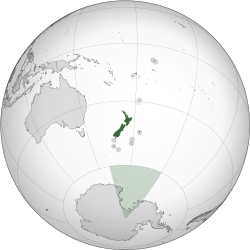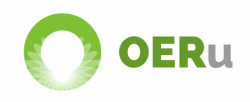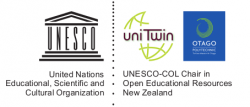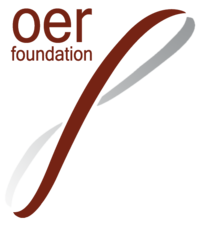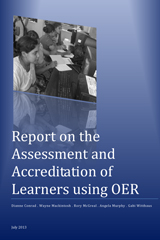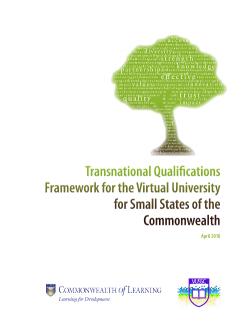New Zealand
Contents
Introduction
New Zealand as a small country with a population of only 4.2 million has made progress in establishing the foundations necessary for scalable uptake and integration of open education approaches in the formal education sector.The penetration of open source learning management systems in the tertiary sector is relatively high by international standards. The New Zealand Government has adopted an open licensing policy for Crown Copyright which encourages School Boards of Trustees to adopt open licenses. However, the framework does not extend to the higher education sector. Currently, open access policies and practices have been adopted at three tertiary education institutions. The OER Foundation is headquartered in New Zealand and at the time of writing, eight tertiary institutions from New Zealand are partners in the OERu international collaboration. Four of New Zealand's eight universities are experimenting with MOOCs covering the spectrum of cMOOCs, xMOOCs and OER-based micro Open Online Courses. Otago Polytechnic has been incorporating open online courses through the OERu collaboration since 2009. The OERu network is leading the development of practices to facilitate international learner mobility through credit transfer and course articulation.
Country demographics
New Zealand's tertiary education sector comprises eight universities, 20 regional-based institutes of technology and polytechnics, three Wānanga (publicly funded institutions guided by Māori principles and values), and approximately 400 registered Private Tertiary Education (PTE) providers. The universities, polytechnics, and Wānanga are state funded and all have authority to award degrees in accordance with the Education Act 1989. Degree awarding authority is not restricted to the university sector, as Polytechnics have degree awarding status in New Zealand. This ensures parity, equivalence, and quality of degree credentials registered with the New Zealand Qualifications Authority (NZQA) or the Committee on University Academic Programmes (CUAP) for the post-secondary sector.
More than two-thirds of New Zealanders have access to the Internet at home. The tertiary education sector is highly competitive, is challenged with escalating costs for tertiary study and derives significant income from export education largely derived from physical mobility models.
Connectivity
The 2013 census data indicates that 77% of New Zealand households have access to the Internet and 84% of households report access to a mobile phone at home (Statistics New Zealand 2013[1]). It is estimated that broadband subscribers account for approximately 85% of the total number of subscribers to the Internet (Statistics New Zealand 2011[2]).
Rising costs of tertiary study
The relatively high number of tertiary education providers for a small population, combined with a high gross enrolment ratio of 84% for the 18 to 24 age cohort, places considerable pressure on the funding model of the sector. Until 1989, government grants for tertiary study covered about 90% of the student costs for tuition. Rapid growth in enrolments during the 1990s resulted in considerable reductions in the ratio of government grant for equivalent full-time students and signalled a shift to a ‘user-pay’ system. During the period from 1991 to 1999, average student fees increased by 170% compared with an increase of only 13% in the consumer price index for the same period (New Zealand Ministry of Education, 2006[3]). In 1992, Government introduced a student loan scheme. Progressively, national student debt is becoming a decision barrier for potential students, with debt amounting to levels which are hard to repay for new entrants into the labour market. In response to these challenges, in 2004, Government introduced a fees maxima regime, which restricted the amount by which tertiary education providers could increase student fees, thus placing further fiscal constraints on the system. In 2010, the new government introduced the Annual Maximum Fee Movement (AMFM), policy which also restricts the amounts by which fees can be increased.
In the university sector, in 2010 for example, 40% of the annual income was derived from government grants totalling NZ$1.3 billion of the combined total university income of NZ$3.1 billion. The remaining income for universities is split evenly between student fees and other sources including research contracts and commercial income. The most significant cost in the sector is staff salaries and related costs equating to 60% of the sector’s total expenditure of $3.0 billion (Universities New Zealand 2013[4]).
The historical funding model has traditionally encouraged competition among tertiary providers. Competition can promote quality, but can also contribute to unnecessary duplication and inefficiencies within the system. This is particularly evident in New Zealand given the relatively high number of providers for a small population that is geographically dispersed. The problem is amplified when organizations use a proprietary intellectual property model for course resources. Citing an extreme example, there are currently 62 registered qualifications available in New Zealand that are intended for the education and training of tertiary teachers serving an average intake of approximately 1,000 learners per annum (Projects International 2010). The NZQA is undertaking a comprehensive review of the system to reduce duplication and proliferation of qualifications. It is hoped that, as a Crown entity, Government's open accessing licensing framework will inform strategies for rationalizing the qualifications framework using open education approaches. For example, generic national qualifications like the NZ Diploma in Business, which can be offered by all accredited institutions, could use the framework to map the availability of OER courses produced by New Zealand institutions and those re-contextualized from elsewhere to avoid similar subjects being duplicated by closed course alternatives within institution-approved credentials. Open and transparent development of the processes and frameworks for rationalizing qualifications would foster the principles of self-organization within the sector when proposing new qualifications or decisions favouring closed course developments.
Export education and the international brand of New Zealand education
Export education is a significant component of the New Zealand economy. Education is ranked as New Zealand’s fourth largest export market generating approximately $3.2 billion in 2013 (Universities New Zealand 2014[5]) . New Zealand universities generated approximately a third of this revenue with the remainder distributed among the school sector, institutes of technology and private tertiary providers. Historically, export education consists predominantly of international students studying locally on campus at New Zealand institutions rather than the provision of online learning offshore.
Five of New Zealand's eight universities are ranked within the top fifty places of the Times Higher Education list of top international universities (Universities New Zealand 2014[6]). Maintaining the quality of provision and protecting the brand of the New Zealand education sector is a high priority, given the magnitude of the higher education export market.
State of the art of Open Education
Over the last decade, various Government initiatives have contributed to a favourable policy environment for open education futures in New Zealand. For example, Government established the E-learning Advisory Group in July 2001, culminating in a report published in March 2002, entitled ‘Highways and Pathways: Exploring New Zealand’s e-learning opportunities’ (ELAG, 2002[7]). Essential outcomes of the report worthy of mention include:- The recurring theme of collaboration and dialogue within the sector as a necessary prerequisite to achieve sustainable e-learning futures; and
- The emphasis on local leadership to forge an e-learning vision with a New Zealand identity.
Another good example of a government initiative was the establishment of the e-Learning Collaborative Development Fund, which invested $28 million over four years from July, 2003 to June, 2007. This was a relatively small investment compared to similar investments in e-learning abroad at the time. However, this competitive fund was designed to enhance the system’s capability with a conditional requirement for inter-institutional collaboration. While not requiring open licenses at the time, the funding agreement stipulated that the outcomes were to be made available for use across the tertiary sector. The e-Learning Collaborative Development Fund facilitated networking and relationship-building among individuals and institutions who previously worked in isolation under a very competitive model. A number of the networks and relationships established as a result of this development fund are currently driving OER innovations in New Zealand.
Headquartered in New Zealand, the Open Education Resource (OER) Foundation was established in 2009 as an independent, not-for-profit organisation that provides leadership, international networking and support for educational institutions to achieve their strategic objectives using open education approaches. The OER Foundation administers WikiEducator, an international community of 70,000 educators collaborating on the development of OER. The OER Foundation is also coordinating the implementation of the OER universitas (OERu). The OERu is an innovation partnership of more than thirty accredited universities, colleges and polytechnics from five continents who will provide more affordable education for students, using courses based solely on OER, with pathways to gain credible qualifications from recognised education institutions.
Open source
The New Zealand Open Source Virtual Learning Environment project was one of the initiatives funded by Government's e-Learning Capability Development Fund. The Open Polytechnic, as project lead, initiated a sector-wide consortium, which grew to 20 universities, polytechnics, and training enterprises collaborating on the review and selection of an open source learning management system, followed by an investment of NZ$1.6 million in code development to improve security and scalability of the Moodle open source platform. Code developments and improvements to the software were shared back with the community in accordance with the General Public License obligation, thus meeting the capability fund requirement to make the outputs accessible for the sector. In November 2004, the Open Polytechnic implemented an enterprise-scale deployment of Moodle serving 35,000 learners. Large organizations were now in a position to migrate to Moodle with the evidence of a large scale deployment that would support their students at an enterprise production level. Government's eLearning Collaborative Development Fund also financed a collaborative venture involving Massey University, Auckland University of Technology, The Open Polytechnic of New Zealand, and Victoria University of Wellington to develop the popular Mahara open source e-portfolio system, which is also increasingly being used in the New Zealand school sector.
This project represented a relatively small investment from Government, but the requirement for collaboration and sharing of outputs as a condition of funding has contributed to sector-wide adoption of open technologies. Today, 77% of New Zealand's tertiary education institutions in the formal sector have migrated to Moodle, compared with the global market penetration of 10% using the Moodle learning management system in 2010 (see Moodle, 2011[8]).
Open policy
In October 2007, Creative Commons Aotearoa New Zealand working under the auspices of Te Whāinga Aronui The Council for the Humanities successfully ported the Creative Commons suite of licences for New Zealand law (Creative Commons Aotearoa New Zealand 2007). The New Zealand affiliate of Creative Commons is now hosted by the Royal Society of New Zealand.
The State Services Commission and the Department of Internal Affairs led work to develop the New Zealand Government Open Access and Licensing framework (NZGOAL). Following two years of research and consultation, the NZGOAL framework was approved by Cabinet on 5 July, 2010, becoming the first government in the world to implement a Creative Commons licensing framework for public sector information.
The NZGOAL framework encompasses a series of policy principles that embrace concepts of open access, open licensing, creativity, and open formats. In short, all public service departments are directed to license copyrighted works under open terms and implement the principles of NZGOAL. Other Crown entities are strongly encouraged to do likewise, while school boards of trustees are invited to implement the NZGOAL principles. Unfortunately, though, tertiary education institutions have been excluded from NZGOAL. The principle recommendation of NZGOAL is that:
| “ | State Services agencies should make their copyright works which are or may be of interest or use to people available for re-use on the most open of licensing terms available within NZGOAL (the Open Licensing Principle). To the greatest extent practicable, such works should be made available online. The most open of licensing terms available within NZGOAL is the Creative Commons Attribution (BY) licence. | ” |
| —State Services Commission | ||
The State Services Commission has developed a series of support resources, including guidelines for agencies and for users intending to reuse public sector information. An impressive online decision tool has been developed, which produces a detailed report containing recommendations on licence alternatives and recommendations for agencies implementing the framework. These resources are available on the NZGOAL website, and licensed under the most open Creative Commons license (see: http://nzgoal.info).
A growing number of School Boards of Trustees are adopting Creative Commons open licence policies in response to NZGOAL. At the time of writing this report, over forty schools have approved Creative Commons policies (Creative Commons Aotearoa New Zealand 2014(a)[9]).
Following a two-year consultation and revision process, Otago Polytechnic adopted an open intellectual property policy in February 2009. The policy provides for dual ownership of intellectual property by the institution and its creators, on condition that it is licensed under a Creative Commons Attribution license. Otago Polytechnic was the first post-secondary institution in the world to adopt a default Creative Commons Attribution licensing policy.
In 2013, Lincoln University approved an Open Access Policy covering research outputs, research data, teaching materials, and public records (Lincoln University 2013[10]). The policy encourages content produced by staff, and in some instances postgraduate students, to be openly shared on the web, and encourages applying a Creative Commons license to determine how material may be shared, reused, and remixed.
In 2014, the University of Waikato approved a mandate around open access to academics’ publications (University of Waikato 2014[11]). Under the mandate, University of Waikato staff are encouraged to deposit the full text of their peer-reviewed academic publications into the University's digital repository. However, the mandate does not require open licensing.
OER initiatives
New Zealand’s major OER initiative is convened by the OER Foundation through the implementation of the OERu. The OERu is an international consortium of post-secondary institutions collaborating on the assembly of OER courses which will provide free learning opportunities to all students worldwide. OERu partner institutions will offer assessment and credentialing services on a fee-for-service basis leading to formal academic credit towards recognised qualifications. The implementation of the OERu is a designated project of the UNESCO-COL OER Chair network. The following New Zealand institutions have contributed to the OERu collaboration as partners:- Ako Aotearoa
- Lincoln University
- Nelson Marlborough Institute of Technology
- NorthTec
- Open Polytechnic
- Otago Polytechnic
- Unitec Institute of Technology
- E-Learning Lab, University of Canterbury (former OERu anchor partner)
- Waikato Institute of Technology
Responding to the global need for upgrading teacher and trainers’ skills in vocational education, Otago Polytechnic announced the development and implementation of a Graduate Diploma in Tertiary Education (OERu 2012[12]). The Graduate Diploma will also be offered as a full credential for the OERu network based solely on OER resources. This is the first credential in New Zealand to be implemented using OER and will provide more affordable opportunities for thousands of educators worldwide who want to upgrade their qualifications and skills.
The OER Foundation has been supporting professional development in OER by offering free and open online courses on OERs, copyright the open licensing. The course materials for the Open Content Licensing for Educators (OCL4Ed) course were originally developed as a collaborative project by volunteers from the OER Foundation, WikiEducator, the OpenCourseWare Consortium and Creative Commons with funding support from the UNESCO Office for the Pacific States. Since 2011, this initiative has offered free training to 2,980 educators worldwide.The OER Foundation and Otago Polytechnic have also been proactive in advocacy work for open education and convened the New Zealand National Symposium on Open Education in December 2012 (WikiEducator 2012[13]). The symposium brought together educational leaders and policy makers to consider the strategic opportunities for OER in New Zealand and to explore policy enablers and practices for harnessing the potential of open education approaches for the benefit of the formal education sector in New Zealand. Proposal for action included: promoting adoption of Creative Commons Policies in Schools; piloting qualifications in the higher education sector based on OER; utilising OER approaches for collaborative professional development of staff in the tertiary sector; and raising awareness of the potential of OER at all levels including government, tertiary, industry and community and to make the case for OER as a matter of public policy.
The uptake of open textbook developments in New Zealand has been slow. However, with support from a small grant from Creative Commons, the University of Otago lead the development of an open textbook in Media Studies (Creative Commons Aotearoa New Zealand 2014(b)[14]). The project adopted a “book sprint” approach where participants across New Zealand and Australia came together for a weekend to populate the first draft of the text. The project will also develop a “cook book” providing guidelines and lessons learned for future open textbook developments using this approach.
MOOCs in New Zealand
Opinion within the New Zealand university sector regarding the potential of the mainstream adoption of MOOCs mirrors the diversity of international opinion ranging from conservative skepticism to proactive implementation.
The Vice Chancellor at the University of Otago, after careful consideration of the MOOC phenomenon, for example, has confirmed the University’s commitment to core values, namely that: “As the only truly residential university in New Zealand, we will continue to deploy our resources, including our human capital, to ensure that current and future generations of Otago students have the opportunity to learn directly from teachers and directly from peers” (University of Otago 2013[15]). Conversely, the OERu collaboration is proactively incorporating MOOC approaches using credit bearing micro Open Online Courses leading to formal academic credit towards university-level credentials.
The following table summarises MOOC activity in the New Zealand tertiary education sector at the time of publication:
| Institution | MOOC Network | Course | Date of 1st delivery | Open licensing | Type | Academic credit |
|---|---|---|---|---|---|---|
| Otago Polytechnic | OERu | Open Content Licensing for Educators | March 2011 | Yes CC-BY |
Parallel mode mOOC | Yes (for all learners) |
| University of Canterbury | OERu | Scenario Planning for Educators | July 2013 | Yes CC-BY-SA |
Parallel mode mOOC | Yes (for registered full-fee students) |
| University of Waikato | N/A (self hosted) |
Data Mining with Weka MOOC | September 2013 | Yes CC-BY-NC-SA |
cMOOC | No |
| University of Waikato | N/A (self hosted) |
More Data Mining with Weka MOOC | April 2014 | Yes CC-BY-NC-SA |
cMOOC | No |
| Massey University | Open2Study | Agriculture and the World We Live In | March 2014 | No | xMOOC | No |
| Massey University | Open2Study | Emergency Management | March 2014 | No | xMOOC | No |
| University of Auckland | Future Learn | To be announced | To be announced | No | xMOOC | No |
- Key
- Parallel mode: Refers to an open online course offered to full-fee registered students in parallel with free learners participating in the same course.
- mOOC: micro Open Online Course is a concept used by the OERu network where micro refers to a subcomponent of a full credit bearing course.
- cMOOC: Open online course drawing on connectivist design approaches.
- xMOOC: Commercial MOOC equivalents administered by the commercial MOOC startups typically integrating short video instruction into the delivery model.
Virtual mobility developments
In the context of this report, virtual mobility refers to the ability for learners and educators to study and teach outside their normal country of residence using online modalities. It is distinct from physical mobility where learners or teachers study or teach face-to-face outside of their normal country of residence.In the case of the OERu network where partners have agreed to award formal academic credit for open online courses, virtual mobility with regards to credit transfer and course articulation across international boundaries is a priority focus. The UNESCO-COL Chair in OER programme with funding support from the Social Sciences and Humanities Research Council (SSHRC) of Canada completed an exploratory research study on the Assessment and Accreditation of Learners using OER (Conrad, Mackintosh, McGreal, Murphy and Witthaus 2013[16]). The report has identified a number of reuse and remix scenarios for accreditation when unbundling teaching, assessment and credentialing. This report will be used as the foundation for a dedicated OERu working group who will develop practical guidelines for credit transfer and course articulation for virtual mobility of learners within the OERu network.
Legal frameworks and regulations
A distinctive feature of the OERu collaboration is that partner institutes retain decision-making autonomy regarding all aspects of course articulation and accreditation within the network. As a result, the OERu operates within existing policy protocols. With reference to the New Zealand partners the following frameworks and regulations are important:- The New Zealand Qualifications Authority (http://www.nzqa.govt.nz), the quality agency which oversees the approval of all qualifications outside of the university sector.
- Committee on University Academic Programmes (CUAP) established by Universities New Zealand (the former New Zealand Vice-Chancellor’s Committee) which approves qualifications in the university sector.
- The Academic Quality Agency for New Zealand Universities which undertake institutional audits of quality for the delivery of approved qualifications.
The OERu partners have agreed to incorporate the Transnational Qualifications Framework (TQF) developed by the Commonwealth of Learning into the guidelines and procedures to be developed by the OERu network for credit transfer and course articulation.
Examples of open education enhanced Higher Education collaboration
The OERu convened by the OER Foundation in New Zealand provides a good example of open education enhanced collaboration in higher education. The OERu network aims to provide more affordable access to higher education, especially for learners excluded from the privilege of access to higher education using open education approaches. As on April 2014, the OERu network consists of thirty one institutions from five continents:
Africa
- University of South Africa (South Africa)
- North-West University (South Africa)
Asia
- S.N.D.T Women's University (India)
Europe
- Institute of Technology Sligo (Ireland)
- Open University of Catalonia (Spain)
- University of South Wales (United Kingdom)
North America
- Athabasca University (Canada)
- BCcampus (Non teaching partner – Canada)
- Contact North | Contact Nord (Non teaching partner – Canada)
- eCampusAlberta (Non teaching partner - Canada)
- Empire State College (SUNY) (USA)
- Excelsior College (USA)
- Kwantlen Polytechnic University (Canada)
- Portage College (Canada)
- Southern New Hampshire University (USA)
- Thompson Rivers University (Canada)
- Thomas Edison State College (USA)
Oceania
- Ako Aotearoa (Non teaching partner – New Zealand)
- Charles Sturt University (Australia)
- Lincoln University (New Zealand)
- Nelson Marlborough Institute of Technology (New Zealand)
- NorthTec (New Zealand)
- OER Foundation (Non teaching partner - New Zealand)
- Open Polytechnic (New Zealand)
- Otago Polytechnic (New Zealand)
- Unitec Institute of Technology (New Zealand)
- University of Southern Queensland (Australia)
- University of the South Pacific (Regional University - 12 Pacific Island States)
- University of Tasmania (Australia)
- University of Wollongong (Australia)
- Waikato Institute of Technology (New Zealand)
References
- ↑ Statistics New Zealand. 2013. Phone and Internet access. Retrieved from: http://www.stats.govt.nz/Census/2013-census/profile-and-summary-reports/quickstats-about-national-highlights/phones-internet-access.aspx.
- ↑ Statistics New Zealand. 2011. Internet service provider survey. Media release. 14 October 2011. Retrieved from: http://www.stats.govt.nz/browse_for_stats/industry_sectors/information_technology_and_communications/InternetServiceProviderSurvey_MRJun11.aspx.
- ↑ New Zealand Ministry of Education. 2006. OECD Thematic review of tertiary education. New Zealand country background report. Wellington: Ministry of Education.
- ↑ Universities New Zealand. 2013. The NZ university system. Retrieved from: http://www.universitiesnz.ac.nz/nz-university-system.
- ↑ Universities New Zealand. 2014. NZ Universities rank among the world's best. Press release. 9 March 2014. Retrieved from: http://www.universitiesnz.ac.nz/node/739
- ↑ Universities New Zealand. 2014. NZ Universities rank among the world's best. Press release. 9 March 2014. Retrieved from: http://www.universitiesnz.ac.nz/node/739
- ↑ ELAG (E-learning Advisory Group). 2002. Highways and pathways. Exploring New Zealand’s e- learning opportunities. Report of the E-learning Advisory Group. Retrieved from: http://www.steo.govt.nz/download/e-learning.pdf.
- ↑ Moodle. 2011. Blackboard usage drops 6%; Moodle grows to 10% market share according to ITC survey. Moodle News. 1 November 2011. Retrieved from: thttp://www.moodlenews.com/2011/blackboard-usage-drops-6-moodle-grows-to-10-market-share-according-to-itc-survey/.
- ↑ Creative Commons Aotearoa New Zealand. 2014(a). Creative Commons policies in schools. http://creativecommons.org.nz/creative-commons-policies-in-schools.
- ↑ Lincoln University. 2013. Open Access Policy. Retrieved from: http://library.lincoln.ac.nz/About/Policies/Open-Access-Policy.
- ↑ University of Waikato. 2014. University of Waikato approves Open Access Mandate Guidelines. News Release. 24 March 2014. Retrieved from: http://www.waikato.ac.nz/news-events/media/2014/03university-of-waikato-approves-open-access-mandate-guidelines.shtml.
- ↑ OERu. 2012. Another world first for Otago Polytechnic: OP to offer full credential for the OERu. News release, 13 December 2012. Retrieved from: http://wikieducator.org/Another_world_first_for_Otago_Polytechnic:_OP_to_offer_full_credential_for_the_OERu.
- ↑ WikiEducator 2012. New Zealand National Symposium on Open Education. Retrieved from: http://wikieducator.org/Otago_Polytechnic/National_Symposium_on_Open_Education.
- ↑ Creative Commons Aotearoa New Zealand 2014(b). Announcing the Creative Commons Media Studies Textbook. Media Release, 13 February 2014. Retrieved from: http://creativecommons.org.nz/2014/02/announcing-the-creative-commons-media-studies-textbook/.
- ↑ University of Otago. 2013. Vice Chancellor’s Comment. University of Otago Magazine. Issue 35: June 2013. Retrieved from: http://www.otago.ac.nz/otagomagazine/issue35/vc-comment/.
- ↑ Conrad, D., Mackintosh, W., McGreal, R., Murphy, A., and Witthaus, G. 2013. Report on the Assessment and Accreditation of Learners using OER. Commonwealth of Learning: Vancouver. Retrieved from: http://www.col.org/resources/publications/Pages/detail.aspx?PID=458.

